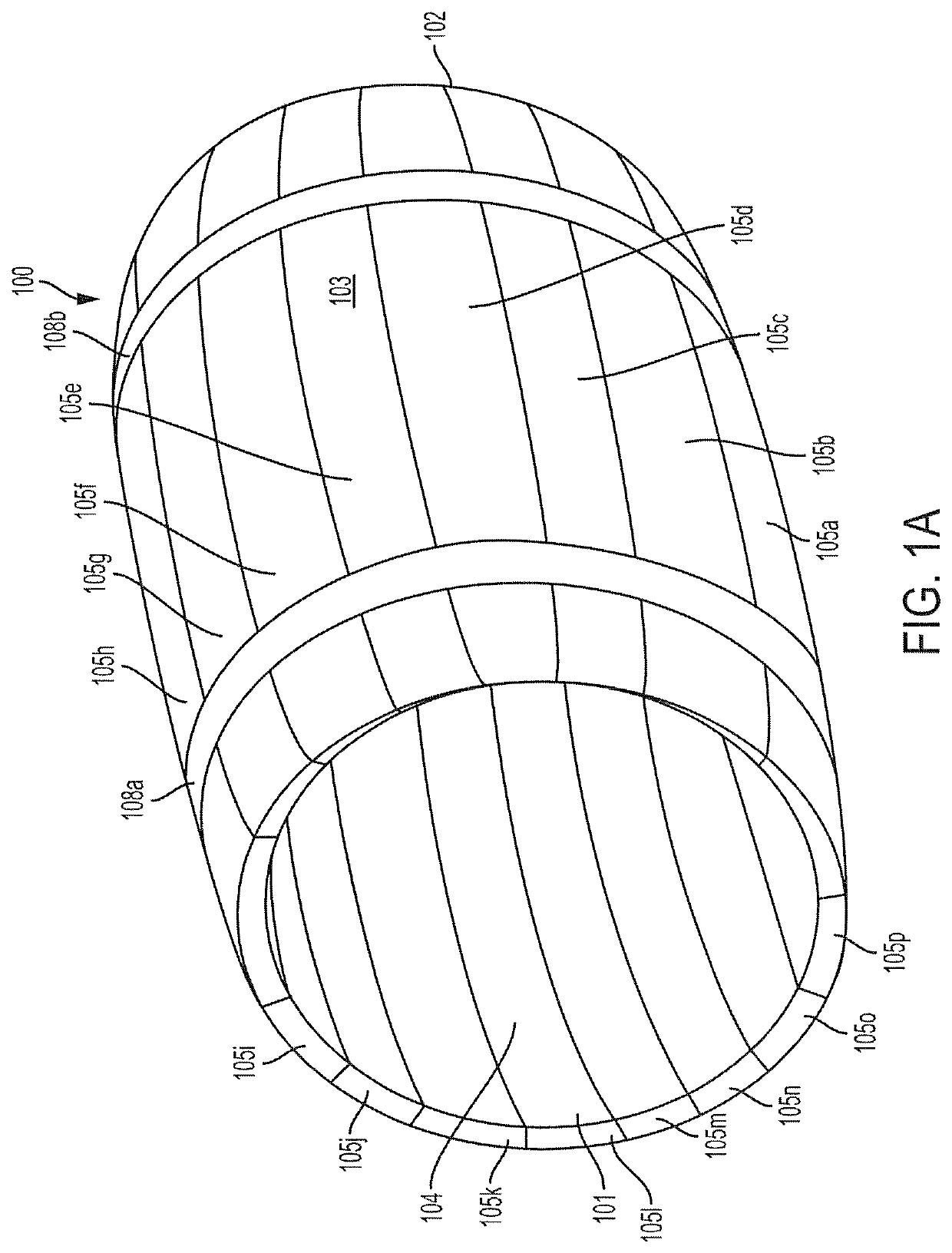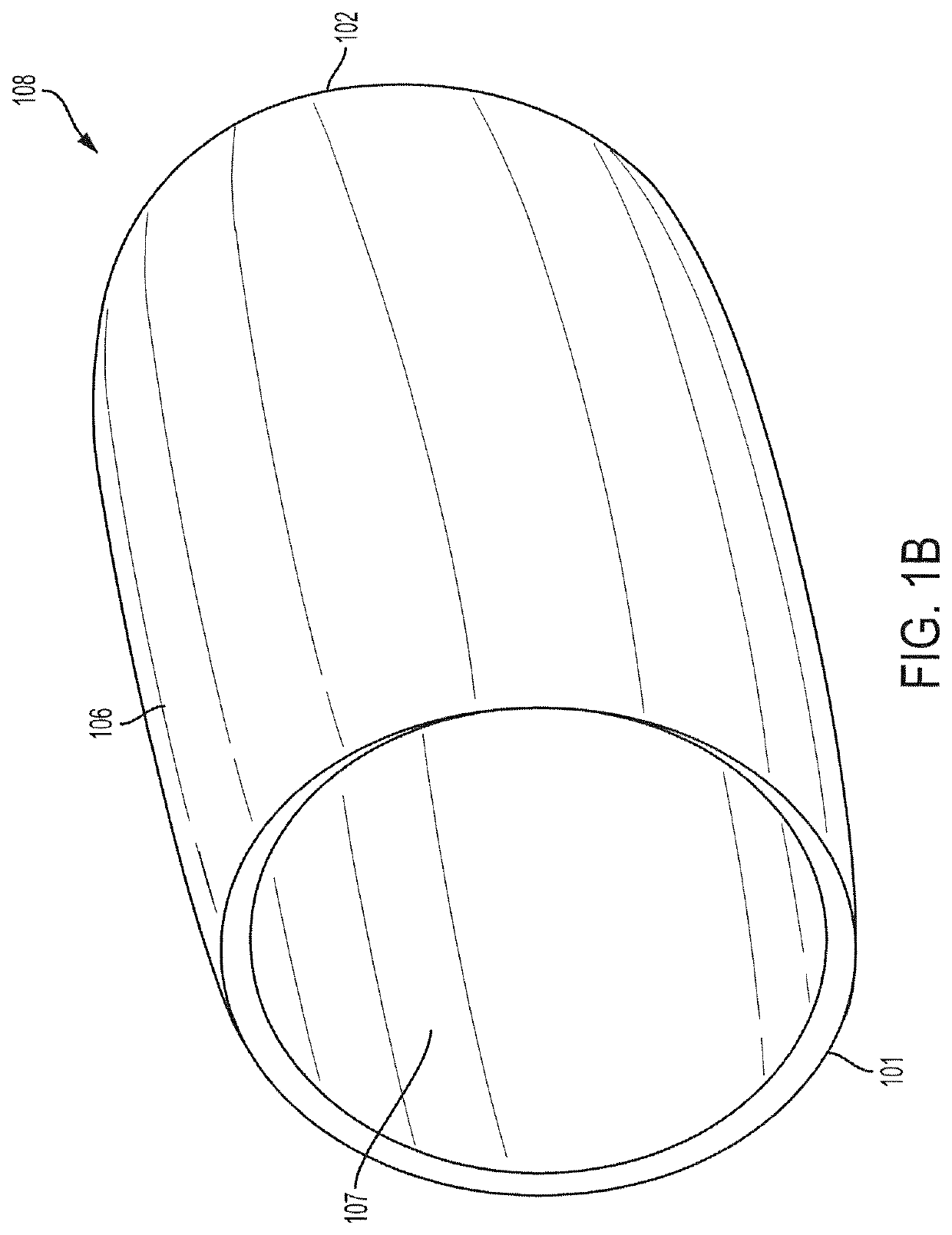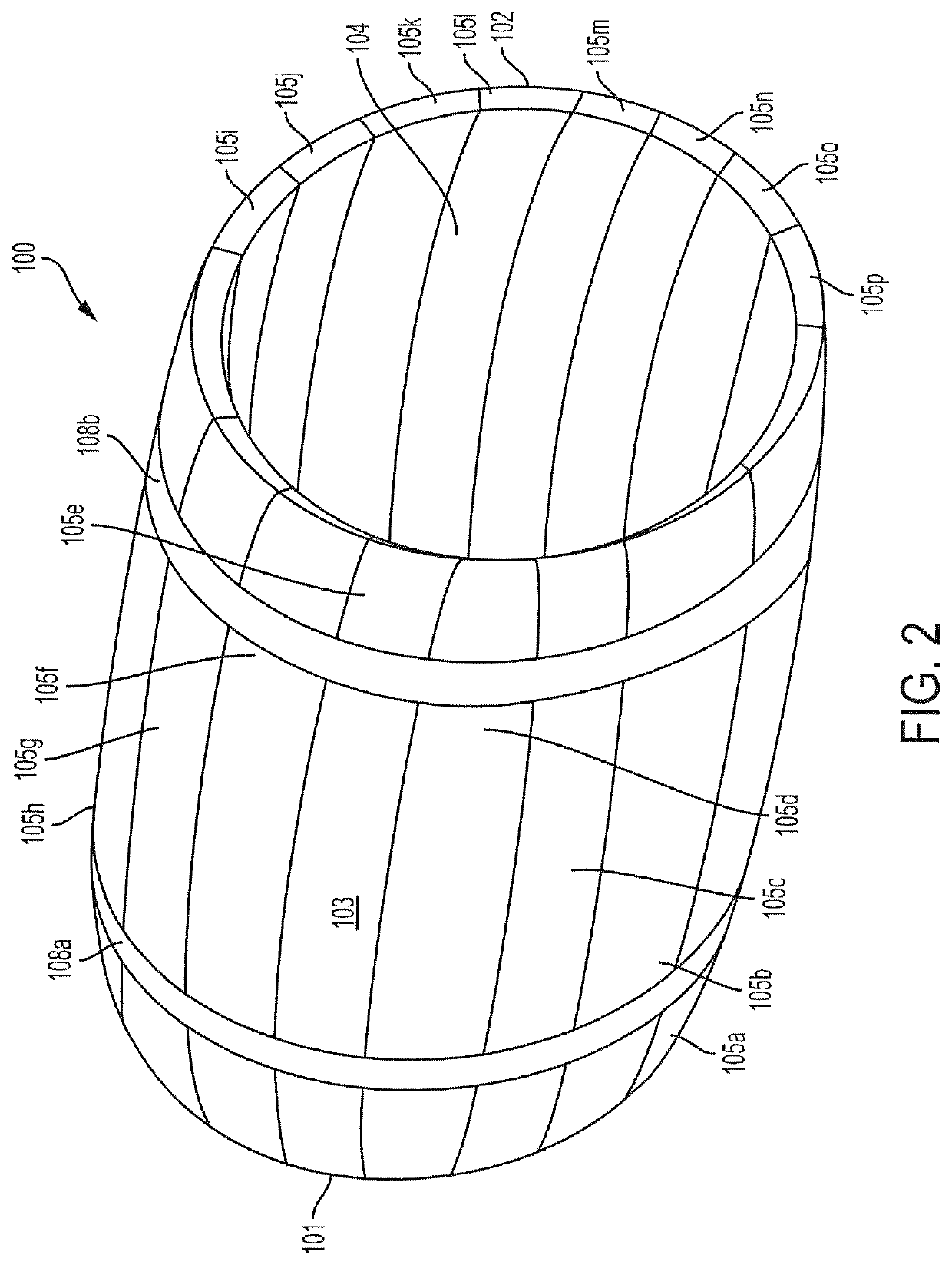Open-back linear bi-directional cabinet for speaker driver
a speaker driver and open-back linear technology, applied in the direction of transducer details, electrical transducers, electrical apparatus, etc., can solve the problems of untrue movement of the driver, affecting the design and construction of the port cabinet, and affecting the effect of the cancellation of the sound pressure wav
- Summary
- Abstract
- Description
- Claims
- Application Information
AI Technical Summary
Benefits of technology
Problems solved by technology
Method used
Image
Examples
example 1
[0052]A barrel-shaped cabinet having a) a mounting ring placed in the internal portion of the cabinet at the midpoint of the cabinet, b) a Seismic Audio Jolt-8, 8″ driver (Seismic Audio Speakers Inc., Memphis, Tenn.) secured to the mounting ring, c) an overall length of 14 inches, d) a center diameter of 9 inches, and e) open ends having diameters of 8 inches.
example 2
[0053]A barrel-shaped cabinet having a) a mounting ring placed in the internal portion of the cabinet, offset 1.75 inches from the center of the cabinet, b) a Dayton Audio DA270-8 (3.5-inch cone depth), 10″ driver (Dayton Audio, Springboro, Ohio) secured to the mounting ring such that the center of the cone aligns with the center of the cabinet, c) an overall length of 16 inches, d) a center diameter of 12 inches, and e) open ends having diameters of 10.5 inches.
example 3
[0054]A barrel-shaped cabinet having a) a mounting ring placed in the internal portion of the cabinet at the center of the cabinet, b) a Seismic Audio—Denali 12, 12″ driver (Seismic Audio Speakers, Inc., Memphis, Tenn.) secured to the mounting ring, c) an overall length of 19 inches, d) a center diameter of 16 inches, and e) open ends having diameters of 14 inches.
PUM
 Login to View More
Login to View More Abstract
Description
Claims
Application Information
 Login to View More
Login to View More - R&D
- Intellectual Property
- Life Sciences
- Materials
- Tech Scout
- Unparalleled Data Quality
- Higher Quality Content
- 60% Fewer Hallucinations
Browse by: Latest US Patents, China's latest patents, Technical Efficacy Thesaurus, Application Domain, Technology Topic, Popular Technical Reports.
© 2025 PatSnap. All rights reserved.Legal|Privacy policy|Modern Slavery Act Transparency Statement|Sitemap|About US| Contact US: help@patsnap.com



